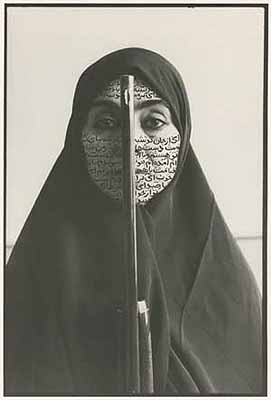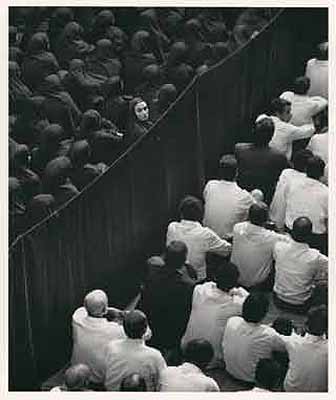
Shirin Neshat »
The 6th Hiroshima Art Prize
Exhibition: 23 Jul – 16 Oct 2005
Hiroshima City Museum of Contemporary Art
1-1 Hijiyamakoen, Minami-ku
732-0815 Hiroshima
+81-82-2641121
The 6th Hiroshima Art Prize Recipient Determined Shirin Neshat, Film Artist from Iran The City of Hiroshima has chosen film artist Shirin Neshat (born in Qazvin, Iran in 1957, presently residing in New York City) as the recipient of the 6th Hiroshima Art Prize. Her world of poetic images goes far beyond pleasing the eye with beautiful design and shape-it transmits future-oriented messages about religion, war, and other current issues. Her work has been determined to further the intent of the Hiroshima Art Prize, which is to convey to the world a deep love of humanity and the message of peace through contemporary art. To commemorate her selection, an award ceremony and exhibition will be held at the Hiroshima City Museum of Contemporary Art to honor Shirin Neshat during the summer of 2005. The Hiroshima Art Prize The City of Hiroshima established the Hiroshima Art Prize in 1989 to honor the achievements of contemporary artists who have contributed to peace, and thereby to convey to the world Hiroshima's aspirations for lasting world peace. The prize, which is awarded every three years, has to date been conferred on the following five parties: 1) Issei Miyake (design) 2) Robert Rauschenberg (fine arts) 3) Leon Golub and Nancy Spero (fine arts) 4) Krzysztof Wodiczko (fine arts) 5) Daniel Libeskind (architecture). Shirin Neshat Shirin Neshat, a female film artist from Iran, has become an important contemporary artist. Born in Qazvin, Iran, in 1957, she moved to the United States for schooling at the age of 16 and eventually studied painting and wood-block printing at the University of California at Berkeley. In 1990, Neshat returned to Iran for the first time in 12 years and witnessed the societal and cultural changes that had occurred as a result of the 1979 Iranian revolution. This visit inspired her to begin the photo series Women of Allah, using the motif of women wearing a chador (a black veil that completely covers the body), and led her to her debut as an artist. The oppression of women in Islamic societies is an important theme of her work. In the latter half of the 1990s Neshat began creating video installations. Of note, her trilogy composed of Turbulent, Rapture, and Fervo, which symbolically contrasts the position of male and female, mainly in the Islamic world, probes problems confronting modern society including sexual issues and male-female relationships. Winning critical acclaim for their unique, fresh perspective and fusion of beautiful images with dramatic music, Neshat's work earned her the Venetia Biennale International Prize in 1999 (Italy) and the Kwangju Biennale Gran Prix in 2000 (Korea). In recent years she has broadened her themes in Passage, a collaborative work with U.S. composer Phillip Glass which is a fantastic depiction of death and burial rites. In 2002 she presented Tooba, which uses an ancient tale as its departure point.

